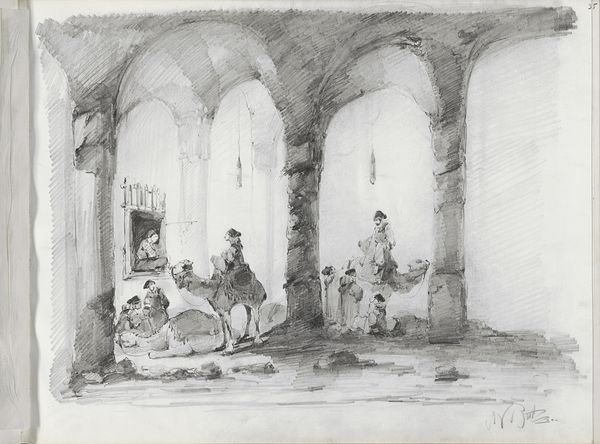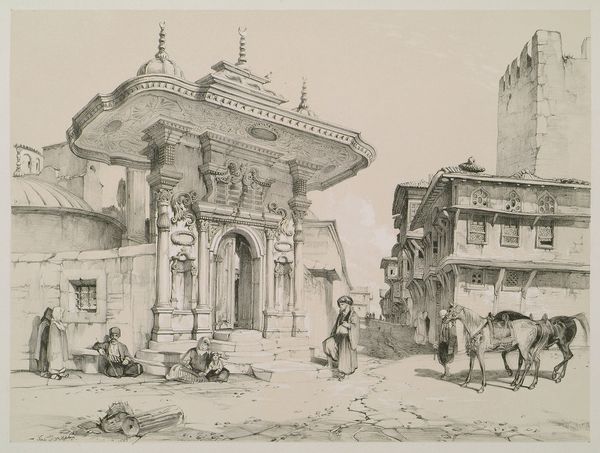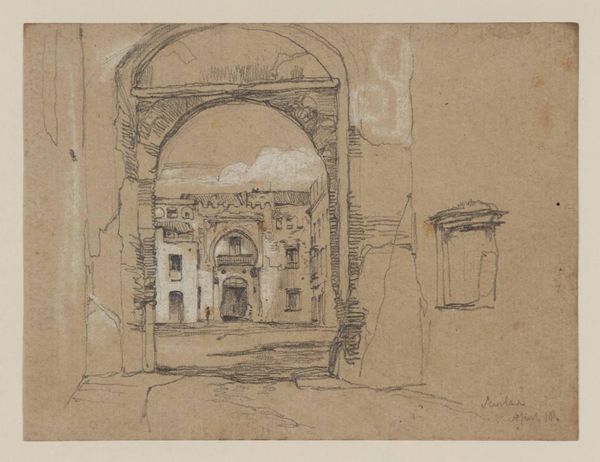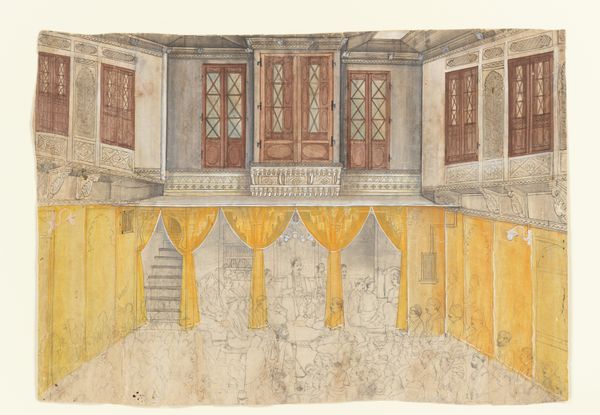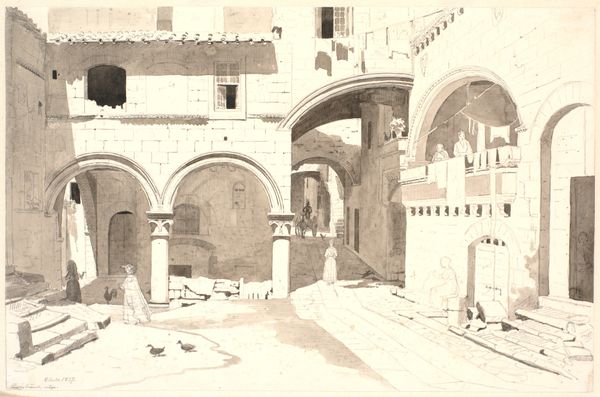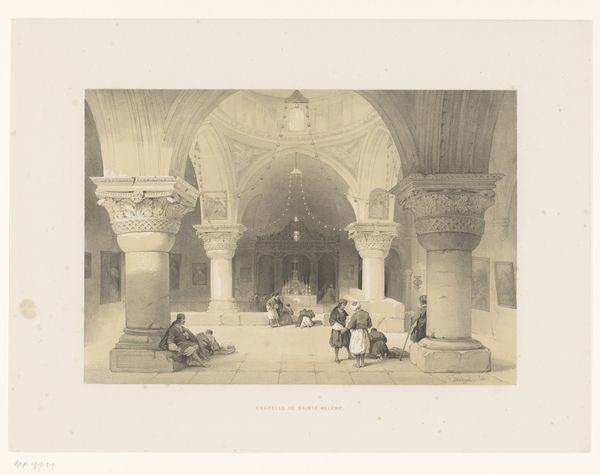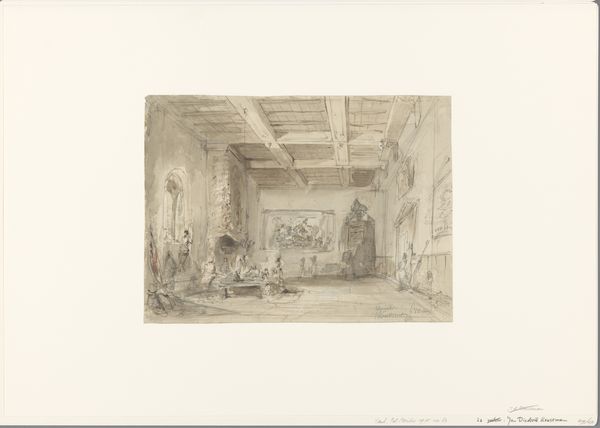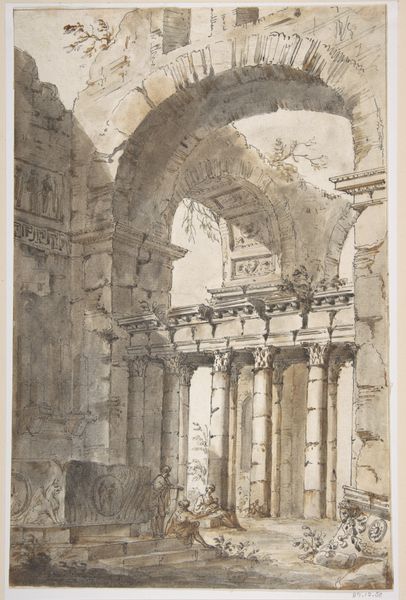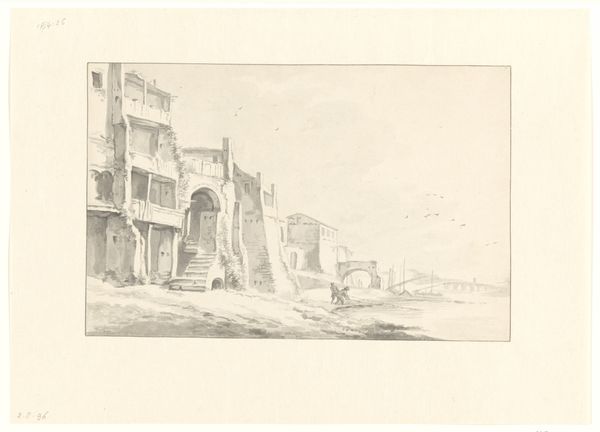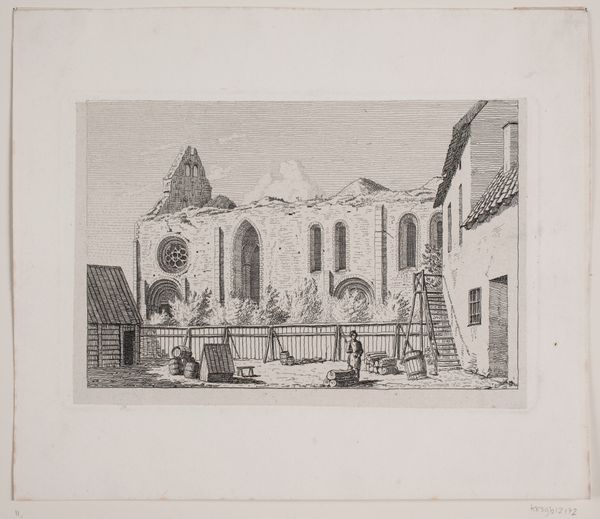
painting, plein-air, watercolor
#
water colours
#
muted colour palette
#
painting
#
plein-air
#
landscape
#
holy-places
#
watercolor
#
cityscape
#
watercolour illustration
#
genre-painting
#
mixed media
#
realism
Copyright: Public domain
Editor: Here we have Jenaro Pérez Villaamil’s "Courtyard of the Infantado Palace in Guadalajara (Spain)", a watercolour from 1837. It’s amazing how the artist captured so much architectural detail with what seems like a very light, almost transparent medium. How do you see the cultural context influencing his choice of material and technique? Curator: Look closely at the watercolor itself. Consider how the fluidity and transparency, its relative ease of transport, allowed Villaamil to efficiently document the rapidly changing urban landscapes of 19th-century Spain. It's not just about capturing a pretty scene; it's about the artist engaging with the physical world, responding to the increasing demands for visual representations tied to social and economic transformations. Why do you think he chose this subject in particular? Editor: I suppose showcasing this grand palace serves as a way of documenting and maybe even celebrating Spanish heritage. There's a contrast, though, with the daily lives of ordinary people depicted in the courtyard, right? Curator: Exactly! This tension between aristocratic grandeur and the everyday is key. Think about who was commissioning and consuming these images. Was it intended to solidify the identity of the ruling classes, or were other markets emerging? The material object itself provides clues about consumption and class. The production process and the access to the work may have cemented power for an elite few while influencing ideas and values among an increasingly aware populace. Editor: So, by studying the watercolor's material and how it was distributed, we can learn about the social dynamics of the time. I see a new appreciation for the significance of focusing on production aspects! Curator: Indeed! It's not just about aesthetics, but about unpacking layers of social, economic, and political contexts embedded in the materiality of the work.
Comments
No comments
Be the first to comment and join the conversation on the ultimate creative platform.
